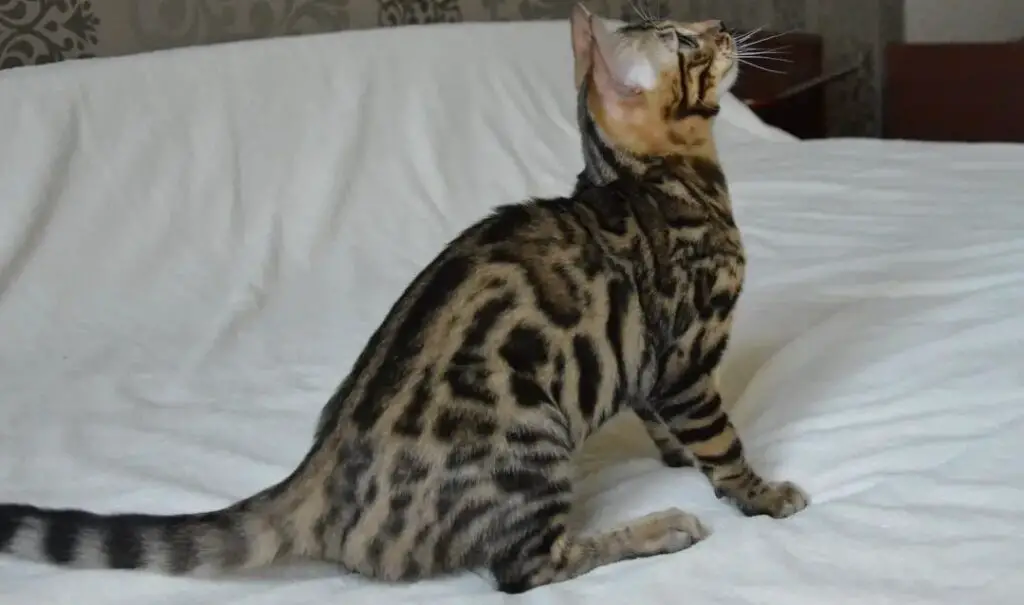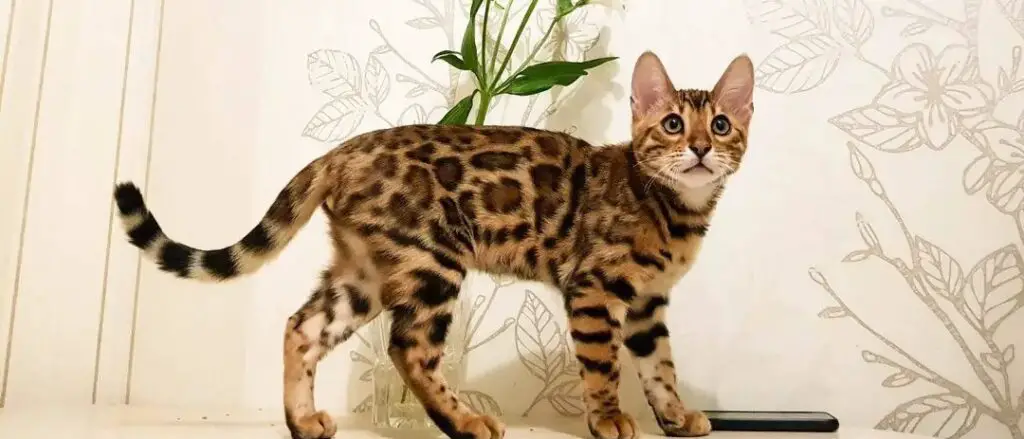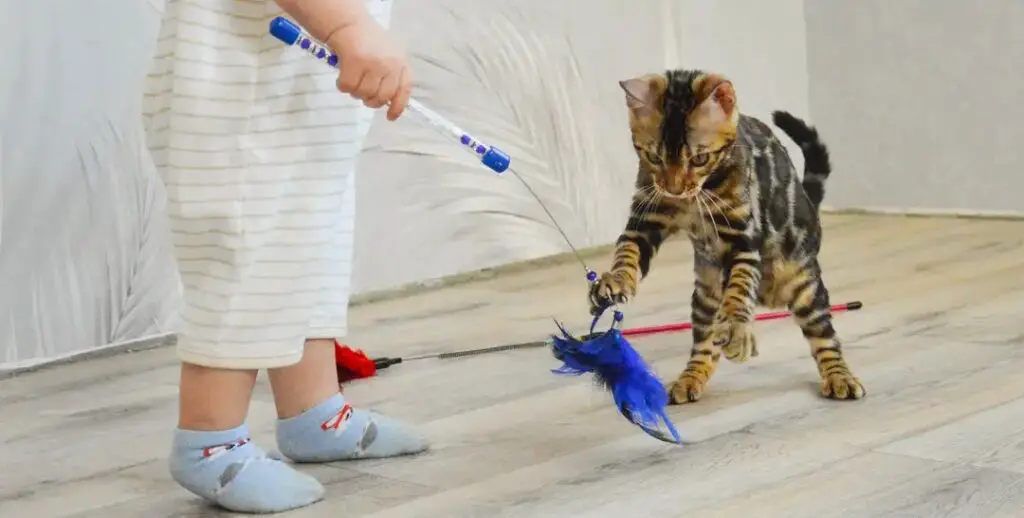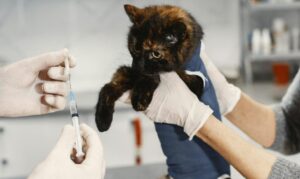As a cat owner, I understand how difficult it can be for your cat to be traumatized after a vet visit, it can also be a problem for you as the cat owner.
In this article, I’ll share some simple reasons why your cat may be traumatized after a vet visit, and what you can do to help your traumatized cat after a vet visit.
I like keeping my blog posts short and straight to the point, so let’s get started…
Cat Traumatized After Vet Visit
From my experience with cats, it’s not uncommon for cats to feel traumatized after a visit, as they can find the experience stressful and unfamiliar.
To resolve this issue, in my opinion, I suggest you establish a soothing and cozy environment for your pet at home, along with a secure area filled with familiar items, to aid in their recovery.
Also, it would help if you tried to reintroduce good experiences gradually, such as snuggle time and favorite foods, to help restore trust and ease any residual fear.
Keep in mind that understanding and tolerance will go a long way toward helping your cat get over their bad experience at the vet.
Note: Stress from the environment and treatment at the vet are the major reasons why your cat can become traumatized after a vet visit.
Let’s break it down further…
Signs of Trauma in Cats After a Vet Visit

Most cats may show different indicators of trauma following a visit to the veterinarian.
These indicators may include excessive hiding or avoidance behavior, in which they withdraw to isolated places and avoid contact with their owners or other pets.
Additionally, most cats may also have fluctuations in their appetite, eating either noticeably less or more than usual.
Another sign is excessive grooming or self-mutilation, where cats may excessively lick or scratch themselves, and inappropriate elimination.
Finally, violent behavior following a veterinarian appointment may indicate trauma in cats toward people or other animals.
Factors Contributing to Cat Trauma at the Vet
Going to the vet can be a stressful experience for our feline friends, in my opinion, here are some major factors that contribute to cat trauma at the vet:
1. Lack of Proper Socialization: This in my opinion is the most common factor that contributes to cat trauma after a vet visit. When a cat is not properly socialized they become fearful of everything around them that is unfamiliar leading to preventable trauma after a vet visit.
2. Unfamiliar Environment: Cats are creatures of habit and can be easily stressed when placed in a new and unfamiliar environment, such as a veterinary clinic. The strange smells, sounds, and sights can make them feel anxious and scared.
3. Handling and Restraint: Cats are known for their independent nature, and being handled and restrained during examinations or procedures can be quite distressing for them. They may feel trapped and threatened, leading to increased stress levels.
4. Noisy and Busy Waiting Areas: Vet clinics can be bustling places, with other animals and people coming and going. This constant activity can overwhelm cats, heightening their anxiety and making them more prone to traumatic experiences.
4. Fear of Needles and Injections: Many veterinary procedures involve the use of needles and injections, which can be particularly fear-inducing for cats. The sight and sensation of a needle can trigger their flight response and cause them tremendous distress.
5. Previous Negative Experiences: Cats have long memories, and if they’ve had a negative experience at the vet in the past, it can create a lasting fear and anxiety for future visits. A traumatic event, such as a painful procedure or rough handling, can leave a lasting impact and make subsequent visits even more challenging.
Understanding these factors and working towards minimizing their impact can go a long way in creating a more positive and stress-free experience for our feline friends during their vet visits.
Related: Cat behaviors after vet visit.
Tips for Minimizing Cat Trauma at the Vet

Here are some major and effective tips to ensure a smoother and less stressful experience for your beloved feline companion:
1. Choose a Feline-Friendly Vet: When selecting a vet for your cat, ensure that they have experience and expertise in handling feline patients. Feline-friendly veterinarians understand the unique needs and behaviors of cats, creating a more calming environment. Look for clinics that have separate waiting areas for cats, use pheromone diffusers to reduce stress, and have designated cat-friendly exam rooms.
2. Frequent Socialization and Handling: Regularly socialize and handle your cat at home to get them accustomed to being touched and handled. Gently touch their paws, ears, and mouth, rewarding them with treats and praise. This will help desensitize them to similar handling techniques used during vet visits, reducing their stress levels.
3. Use a Comfortable Carrier: Invest in a comfortable and secure carrier for your cat. Choose a carrier with a removable top or a front-loading door to make it easier to place your cat inside without causing undue stress. Leave the carrier out in your home, so your cat becomes accustomed to it and views it as a safe and familiar space.
4. Familiarize Your Cat with the Carrier: To further reduce stress, associate the carrier with positive experiences. Leave the carrier out with cozy bedding and treats inside. Encourage your cat to explore and enter the carrier voluntarily by placing their favorite toys or treats near it. This will help create a positive association with the carrier and make vet visits less daunting.
5. Provide Calming Aids: Prior to the vet visit, employ calming techniques to help keep your cat relaxed. Consider using pheromone sprays or diffusers, which release synthetic feline pheromones that can help reduce anxiety. Additionally, play soft classical music or use white noise machines to create a soothing environment for your cat.
6. Communicate with the Vet: Effective communication with your vet is crucial. Inform them about any specific fears or triggers your cat may have, as well as their past experiences at the vet. This will help the vet tailor their approach and minimize any potential stressors. Ask your vet to handle your cat gently, use minimal restraint, and provide treats during the examination to create positive associations.
Post-Vet Visit Care for Traumatized Cats

Here are some effective ways to help your cat cope with trauma after a vet visit:
1. Create a Safe Space: After returning from the vet, your cat may be feeling scared and anxious. Set up a quiet and cozy area in your home where they can retreat to and feel safe. Provide a comfortable bed, favorite toys, and familiar scents to help them relax.
2. Offer Gentle Affection: While some cats may seek extra attention after a vet visit, others may prefer solitude. Pay attention to your cat’s body language and respect their boundaries. Offer gentle affection and soothing words, allowing them to approach you when they’re ready.
3. Maintain a Consistent Routine: Cats thrive on routine, and maintaining a sense of normalcy can help them feel more secure. Stick to their regular feeding and playtime schedule, providing them with a sense of stability during this potentially unsettling time.
4. Gradual Reintroduction to the Carrier: The sight of a carrier can trigger anxiety in many cats due to its association with vet visits. Gradually reintroduce the carrier into your cat’s life by leaving it out in a safe space, placing treats or toys inside, and allowing your cat to explore and associate positive experiences with it.
5. Use Calming Remedies: Consider using natural calming remedies, such as pheromone diffusers or sprays, to create a calming environment for your cat. These products mimic the familiar scents that cats release when they feel safe, helping to reduce anxiety.
6. Engage in Interactive Play: Engaging your cat in interactive play can help redirect their focus and release pent-up stress. Use interactive toys, such as feather wands or puzzle toys, to stimulate their minds and provide an outlet for their energy.
7. Provide Hiding Spots: Create hiding spots throughout your home where your cat can retreat if they feel overwhelmed. These spots can be cozy blankets under furniture or dedicated cat condos that offer privacy and comfort.
8. Monitor Their Eating and Drinking Habits: Some cats may experience a loss of appetite or changes in their eating and drinking habits after a vet visit. Ensure they have access to fresh water and offer them their favorite treats or wet food to entice them to eat.
9. Consider Professional Help: If your cat’s trauma persists or worsens despite your efforts, it may be beneficial to seek professional help from a veterinarian or a certified animal behaviorist. They can provide additional guidance and recommend tailored strategies to help your cat overcome their trauma.
It’s important to remember that every cat copes with trauma differently, and it may take time for them to recover fully.
Preventing Trauma in Future Cat Visits to Vet
For our feline friends, going to the vet can be a stressful event, but there are strategies to reduce tension and make the appointment more enjoyable.
Make sure your cat is at ease and accustomed to their carrier by first acclimating them to it.
Second, to assist in establishing a tranquil atmosphere, think about utilizing pheromone goods, including diffusers or sprays.
Third, prepare your cat for veterinarian operations at home by using gentle handling and desensitization techniques.
Lastly, pick a vet that specializes in feline medicine and recognizes the value of a visit that is stress-free.
By doing these things, you can lessen the likelihood of trauma and improve your pet cat’s future experiences with veterinarian appointments.
Related: When to take your cat to the vet.
Conclusion
In summary, if your cat is feeling traumatized after a vet visit, remember that patience and understanding are key. Creating a calm and comforting environment, providing familiar objects, and seeking professional guidance can greatly aid in their recovery. With time and gentle care, your feline friend will regain their confidence and bounce back to their happy selves.
Related Questions
Why is my cat traumatized after a vet visit?
Cats can become traumatized after a vet visit due to the unfamiliar environment, strange smells, loud noises, and the physical examination or procedures they may have undergone. It’s important to give them time and space to adjust and provide comfort and reassurance.
How can I help my cat recover from vet visit trauma?
To help your cat recover from vet visit trauma, create a calm and safe space for them at home, provide familiar objects like their favorite toys or blankets, and engage in gentle and soothing interactions. Consult with a veterinarian for additional advice or possible behavior modification techniques.
How long will it take for my cat to overcome vet visit trauma?
The time it takes for a cat to overcome vet visit trauma varies from cat to cat. Some cats may recover quickly within a few days, while others may take longer. Patience, understanding, and consistent reassurance will greatly aid in their healing process.
Should I consider sedating my cat for future vet visits to prevent trauma?
Sedation should only be considered if recommended by a veterinarian and if all other alternatives have been explored. It’s important to discuss your concerns with your vet and explore less invasive options, such as desensitization techniques or the use of calming aids, before considering sedation.









